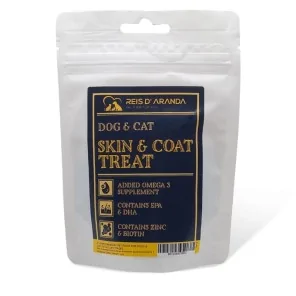Its name says it all: the Vienna blue rabbit comes from Austria. Not only is it beautiful with its shiny blue-grey...
THE CYMRIC CAT
INTRODUCTION
In the wonderful world of cats, there are many breeds with unique characteristics that make them special and lovable. One of these charming breeds is the Cymric, a feline that stands out for its peculiar characteristic: the absence or shortening of its tail.
THE ORIGIN OF THE CYMRIC CAT
Legend has it that cats with short or absent tails arrived on the Isle of Man several centuries ago, sailing on a wrecked Spanish ship. However, the historical truth is more complex and not entirely clear. It is believed that the genetic mutation responsible for the short tail in cats developed naturally in the island's cat population.
The lack of a tail or the shortening of the tail is due to a genetic condition known as ‘Manx Syndrome.’ This genetic mutation affects the structure of the cats' spine and can vary in its degree of severity. Some Cymric cats are born completely tailless, while others may have a very short, stiff tail.
In later years, these short-tailed cats became a breed recognised and appreciated for their uniqueness and charm. Although the Manx was the first breed to be officially recognised, the Cymric developed as a variant of the Manx exhibiting the same genetic characteristics but with a longer and denser coat.
The name ‘Cymric’ comes from ‘Cymru’, which is the Welsh name for Wales, a country near the Isle of Man. The choice of the name Cymric emphasises the geographical and cultural connection between the Isle of Man and Wales.
WHAT DOES THE CYMRIC CAT LOOK LIKE?
According to morphological information from TICA (The International Cat Association), the Manx and the Cymric together form the Manx group of breeds. They differ only in the length of their coat: the short-haired ones are known as Manx and the long-haired ones as Cymrics. They are available in all the traditional colours and patterns, often with striking colours and spectacular markings.
They have a thick coat which gives a cushioned feel to the body and contributes to their rounded appearance. The short-haired Manx has a double coat and the somewhat harsh guard hairs tend to have a glossy appearance. The longhaired Cymric has a silky texture to its plush, medium-length coat, with fluffy breeches and ruff.
Although the lack of tail is the immediately obvious characteristic of these breeds, they are also known for their roundness. These medium-sized cats have short, rounded bodies, with a deep flank to the strong hindquarters, arched back and a round head with round cheeks. The eyes are also round, but slightly slanted, and the ears resemble the cradle of a rocking chair, giving them a gentle expression.
Although the lack of a tail is the most striking feature, it is important to note that the nerve endings are still present, but are not protected, so care should be taken when handling the area where the tail or stubby tails would have been.
THE HEALTH OF THE CYMRIC CAT
Cymric cats, like their sister Manx breed, may be predisposed to some health problems associated with the genetic mutation that causes the short or absent tail. One of the most common problems is ‘Manx Syndrome’.
This condition affects the spine and can cause neurological problems, including defecation and walking difficulties. Another prevalent pathology in the Cymric is congenital and neurological. This is spina bifida, which causes incontinence as a result of sacral and caudal nerve involvement.
In addition, some Cymric can develop orthopaedic problems, such as hip dysplasia or hind leg malformations due to genetic mutation.
Cymric cats are low maintenance cats in terms of their coat. Although they have a double coat of soft, dense hair, their coat does not tend to mat easily, requiring occasional brushing to keep it in good condition.
THE CYMRIC CAT'S PERSONALITY
In addition to their unique physical appearance, Cymric cats are known to have a charming personality that makes them ideal companions. They are affectionate, loving and loyal to their owners. They love to be close to people and tend to get along very well with children and other pets in the household.
As we have already mentioned, they are playful and curious, which makes them fun to watch and interact with. They like to explore their environment, and although they do not have a long tail to help them keep their balance, they are agile and coordinated.
CONCLUSION
These cats are playful and affectionate and thanks to living with humans they can mature slowly, they are often quite mischievous even in adulthood, so they are active and need activities to redirect their energy and stimulate their mind.
Leave a comment
Log in to post comments
















